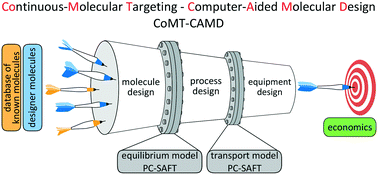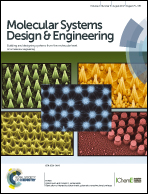From molecules to dollars: integrating molecular design into thermo-economic process design using consistent thermodynamic modeling†
Abstract
The right molecules are often the key to overall process performance and economics of many energy and chemical conversion processes, such as, e.g., solvents for CO2 capture or working fluids for organic Rankine cycles. However, the process settings also impact the choices at the molecular level. Thus, ultimately, the process and the molecules have to be optimized simultaneously to obtain a thermo-economically optimal process. For a detailed design of the process and also the equipment, a thermodynamic model is required for both equilibrium and transport properties. We present an approach for the integrated thermo-economic design of the process, equipment and molecule on the basis of a comprehensive, thermodynamically consistent model of the molecule. For this purpose, we developed models for transport properties based on entropy-scaling of the perturbed-chain statistical associating fluid theory (PC-SAFT) equation of state. Thereby, a single model predicts both equilibrium and transport properties in our optimization-based approach for the integrated design of the process, equipment and molecule, the so-called 1-stage CoMT–CAMD approach. The predicted transport properties allow for the design and sizing of unit operations as degrees of freedom during the optimization. Computer-aided molecular design allows the design of novel molecules tailored to the specific process while considering safety and environmental issues. The presented approach is exemplified for the design of an organic Rankine cycle showing the merits of detailed sizing of heat exchangers with different heat transfer types and the rotating equipment as part of the optimization. Single-objective optimization is used to obtain a ranking of potential working fluids. The detailed trade-off between the total capital investment and the net power output of the ORC is studied using multi-objective optimization. Thus, the 1-stage CoMT–CAMD approach allows for efficient and holistic designs linking the molecular scale to economics.



 Please wait while we load your content...
Please wait while we load your content...